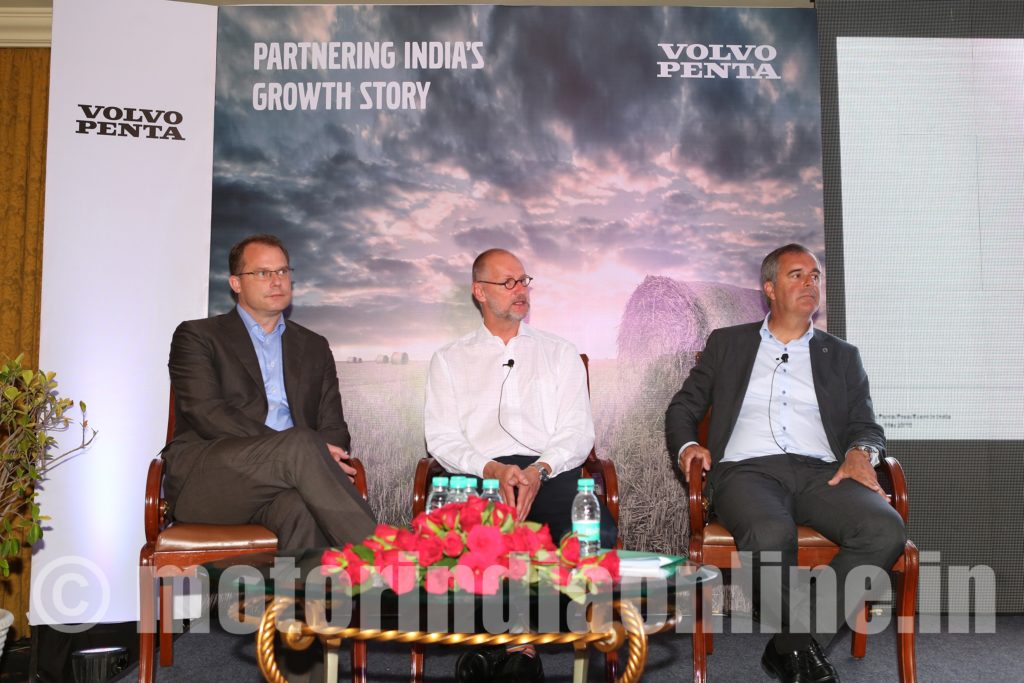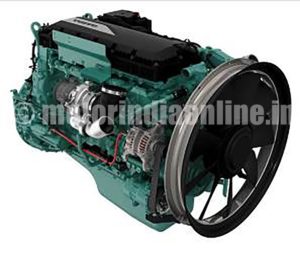Volvo Penta carries the distinction of being three years senior to the Volvo Group as a whole when it comes to its presence in India. Yet, unlike the Group’s other divisions in India, Penta has taken its time in developing its base here, garnering market share, producing world-class engines for different sectors and has now finally decided to add a new production line at its Pithampur facility in India.
Penta is known the world over for its marine engines. In India it partners with the Navy. Now, additionally, it is steadily working towards increasing its market share by cashing in on the jump-start that different sectors like construction, infrastructure and others are receiving from the Central Government.

Mr. Bjorn Ingemanson, President & CEO, AB Volvo Penta, reveals, “We see growth in infrastructure and construction segments for which environmental friendly operations are being sought. We are pleased to cater to a growing demand from our customers for fuel efficient engines.”
The Volvo Group has had its production facility built and running in Pithampur, Madhya Pradesh, since a few years, but now Penta will be investing in a unique production line tailored to its global specifications. And Penta is planning to start production in the second quarter of 2017.
Mr. Peter Hertinge, Senior Vice President, Global Operations & Quality, Volvo Penta AB, shares: “As a Group we have invested almost Rs. 2.9 billion in the Pithampur facility. We began producing engines at the Pithampur factory in 2012 which is equipped both from quality and capacity perspectives to supply engines to all different business areas in the Volvo Group. We also produce engines from long block and we do the basic production in India. Then we take the engines to Europe where we do the final dressing to get close to that market. So we already use this production facility for supplying engines to other parts of the Group. We will start production of the 5 and 8-litre engines here in India. As of now these are already part of our product range being partly produced in India but finalized in Europe. But what we are doing now is that we are localizing the whole production of it in India.”
Producing in India is advantageous for Penta because it readily offers a shorter lead time and simpler logistics. Mr. Hertinge stresses that the benefits for the end customer in the first phase will mainly comprise of reduced logistics cost and lead time because it’s the customer who pays for it.
All that is left for it to perform is ‘make an investment inside the factory to do the final assembly of the specifications’.
Mr. Jonas Nilsson, Vice President, Volvo Penta India, expands: “This initiative to start local production is a good foundation for growth and to continue to develop our product range to meet the demands in India. If that is of higher specifications or following the initial legislation, then that is what is important for us in the coming years.”
The new production line is a ‘highly automated approach’ and is geared to deliver engines of all different emission standards.
Mr. Hertinge shares: “We have all the testing facilities needed for the different levels of emissions and that is extremely important because this site in India will be used both for here and for the world. And right now, we are in the build-up phase since we started the production in 2014 and we have dedicated products on the truck side and on the bus side to use these engines. But yes, initially, we will establish our production for the Indian market in the second quarter of 2017.” But it’s the marine segment in India that offers only a tiny slice of its major business that Penta is known for worldwide.
Mr. Hertinge shares: “Globally for us, the marine segment in volumes is much more than the automotive and the industrial segments. In India, we are more into the marine commercial sector with river transportation kind of applications.”
With the new line geared up to a total technical capacity of around 100,000 engines the officials at Penta are aware that the market requires a focused and steady approach to build new confidences to carve out a market share.
Mr. Nilsson offers an insight: “The size of the market will depend much on the type of applications and priorities that you set for the market. So we don’t engage in the total available market because the Volvo Group has its own internal products. Hence, we target demanding customers in selective segments like construction, material handling, and raw material among others. Being a premium player in the industry, the available market for us is much lower than the automotive side.”
As for the entire Volvo Group, Penta too insists on working with uniform standards of quality with geographical location no bar.
Mr. Hertinge says: “We are working with a strategy in Volvo Penta from the global perspective. Since we are a global company and the challenge that we have is to make sure that we can supply engines to all parts of the world with good lead times and a good cost, coming to it has been a bit of a challenge because most of our production has been in Europe till now but we would like to be more present in the Indian market and therefore we are coming close to the market with our local production here. So our global strategy is to supply with short lead times and with a good price level. We have three production plants – one each in China and Europe and the third is in the US. These three sites have our own production and distribution.”
While Penta begins the process of localization for the engines in the factories, the level of indigenization ‘can go upto 90 per cent’.
As a fast and most promising market currently in the world, India is luring many a manufacturer, and that is why Mr. Nilsson says: “Today the individual biggest market is US if you take all the engines sold, but India has the potential to become one of the top three markets in the coming future.”
Pegged as a premium engine manufacturer, Penta is aware of the ‘low cost production of local engines in Indian and Chinese markets’ and in turn this means that “we are not competing with our products in all segments, but are competing mainly with big international engine producers, so we would never be an engine that everyone will buy because we have a strategy to be the premium brand,” shares Mr. Nilsson.
Adds Mr. Hertinge: “We are becoming local in India from our production perspective and we give our customers the opportunity of a better engine with a better price because there less customs duty.”
Mr. Nilsson says: “We work with Indian OEMs who are interested in exporting and developing their export business. So these businessmen will have a great possibility to do that in partnership with us because our product is global and it can be serviced globally.”
Volvo Penta engines, the world over, power equipment ranging from large machines to tractors. With a formidable reputation like that, it is only a matter of time before Penta proves its worth as a silver bullet to all machines running Indian industry.
